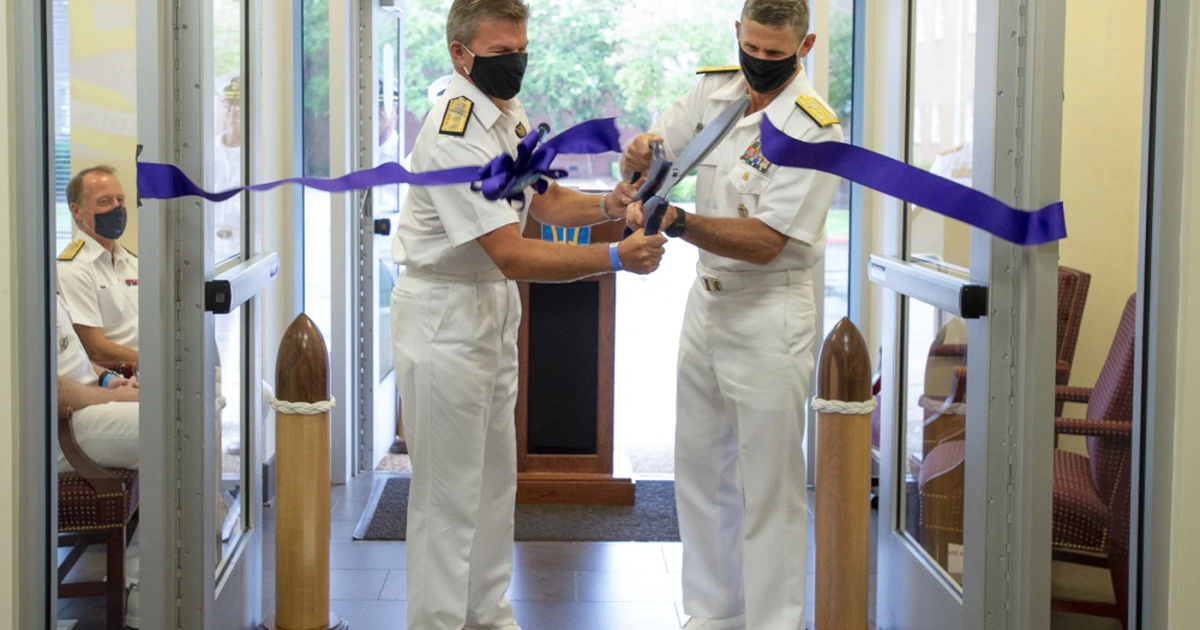
After reaching initial operational capability, Joint Force Command Norfolk was stood up on Thursday — becoming the only operational NATO command on the North American continent.
The joint multi-national operational command, based out of Norfolk, Virginia, is designed to reinforce NATO readiness in the Atlantic with its “extensive maritime expertise,” and bolster communications between Europe and North America. The command maintains air, surface, and subsurface capabilities and will be involved in planning and conducting air, land and sea operations.
“The establishment of this command confirms enduring cohesion with NATO and its ability to face all challenges,” commander of JFC Norfolk Navy Vice Adm. Andrew Lewis said Thursday during a ribbon-cutting ceremony at Naval Support Activity Hampton Roads.
“We have recognized the increasingly complex operating environment, particularly in this geographic area,” he said. “NATO has adapted to this challenge by strengthening its defensive posture.”
Lewis, who was tapped to serve as the commander of JFC Norfolk in October 2018, said that the work had just begun though, and that the next milestone for the command is to reach full operational capability by the end of 2021.
He also stressed that threats jeopardizing the safety of the trans-Atlantic link require interoperability between multiple nations — not just one. The command is also designed to aid relationships across the Atlantic with allies and partners, and deter adversaries.
“This ceremony marks a significant milestone in providing a new, crucial location and link to the Alliance, ultimately ensuring a 360-degree approach for our collective NATO defense and security,” Lewis said.
Lewis, a Naval aviator who has flown in more than 100 combat missions during the course of his career, has also served as the commander of the U.S. 2nd Fleet since August 2018. The 2nd Fleet was resurrected that year after it was merged with Fleet Forces Command in 2011.
Lewis has routinely cautioned about the dangers Russia poses to U.S. and allied troops, particularly under the sea.
“Let’s be frank, the Russian undersea threat is real,” Lewis said at a Center for Strategic and International Studies event in 2018. “They are very competent.”
Lewis has also warned that sailors departing Norfolk should be prepared to operate in contested space. That’s because of an “ever-increasing number” of Russian submarines in the Atlantic, he said.
“Our ships can no longer expect to operate in a safe haven on the East Coast or merely cross the Atlantic unhindered to operate in another location,” Lewis said during an U.S. Naval Institute and the Center for Strategic and International Studies even in February, according to USNI News.
Establishing the JFC Command has been in the works for several years, and NATO defense ministers signed off on Norfolk as the headquarter’s location back in June 2018.
NATO defense ministers also announced in 2018 the establishment of a new command The Joint Support and Enabling Command, based in Ulm, Germany. That command’s primary purpose is to guarantee NATO can quickly move allied infantry and armor across European borders, and reached initial operating capacity in 2019.
[US, Germany likely home to new NATO commands]
The Ulm-based command is expected to reach its full staffing capacity of 160 personnel by 2021, and can draw on up to 600 personnel during a crisis, according to NATO.
U.S. European Command leader and Supreme Allied Commander Europe Air Force Gen. Tod Wolters oversees both JFC Norfolk and The Joint Support and Enabling Command.
“The shared history and beliefs of NATO allies and our commitment to one another cement the Euro-Atlantic as the cornerstone of global security,” Wolters said Thursday during the JFC Norfolk ribbon cutting ceremony in a virtual appearance.
“Allied Command operations with JFC Norfolk increases our ability to secure and sustain the transatlantic link, a vital mechanism decisive in winning two world wars and critical to 21st century comprehensive deterrence and defense,” Wolters said.
Wolters has served in the dual-hatted role of EUCOM commander and Supreme Allied Commander Europe since May 2019, replacing U.S. Army Gen. Curtis Scaparrotti.



Be the first to comment